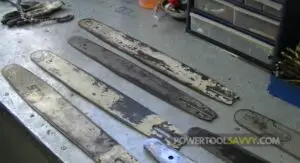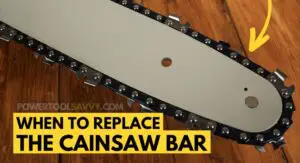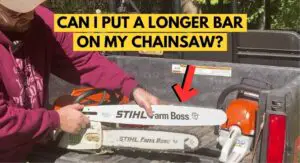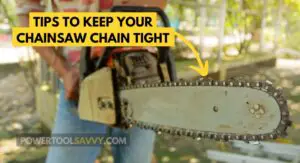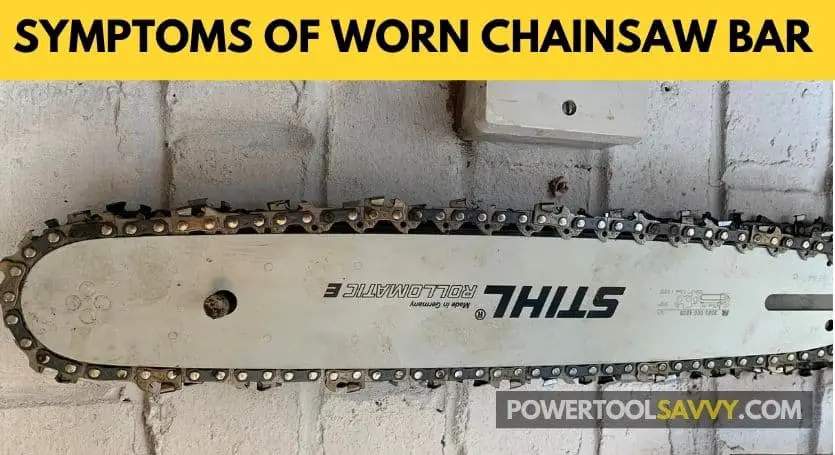
Let’s face it:
Chainsaw guide bars are durable, but they don’t last forever!
Here are 7 symptoms of a worn chainsaw bar:
- The chain wiggles a lot
- The bar rails are badly worn
- The bar is bent
- The saw cuts crooked
- The bar nose sprocket is jammed or broken
- The bar is cracked or missing chunks
- The chain gets stuck in the bar or doesn’t move at all
Btw, I’m Samuel Anali I’ve 20+ years of experience with chainsaws. So I know what a worn-out chainsaw bar looks like.
In this article, I’m going to get into the signs of a worn chainsaw bar in more detail so you can diagnose yours.
Let’s get started!
Table of Contents
Toggle8 Symptoms of a Worn Chainsaw Bar
Replacing a bar could be pocket-pinching! 💸 (I know the feeling)
But don’t make it a habit to ignore the signs of a worn chainsaw bar.
Here are 8 signs of a worn chainsaw bar: 👇
1. The Chain Wiggles a Lot
If your chain no longer fit snugly within the bar groove, instead it wiggles (or moves side-to-side) a lot when you give it a tug, chances are the bar is worn.
Because over time, the groove gets wider from all the wear and tear. That means it can’t snugly hold the chain in place anymore.
Here’s a real-life example: I had a bar with a .050″ gauge, but it wore down to .054 (I guess! 🤔)
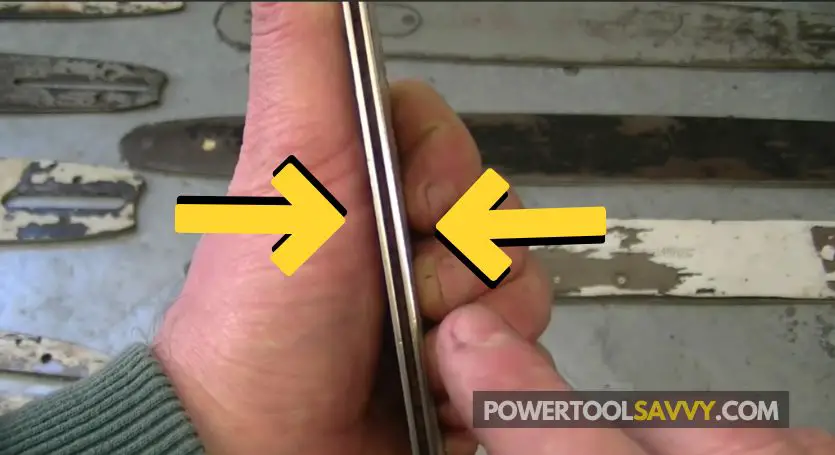
And as a result, when I put a .050″ gauge chain on it, I encounter a lot of side-play.
Now you might be wondering –
“What’s the BIG deal if the chain is a bit wiggly?“
Well, it could make the chain to jump off the bar, and not only mess up your saw big time but put you in some serious danger too!
On top of that, it’ll make it a real challenge to cut in a straight line (count it as an indirect symptom of a worn-out bar!)
So, if your chain’s wiggling around a lot, it’s probably a good idea to give it a check-up!
2. The Bar Rails are Badly Worn
The bar rails are the two ridges that run along the length of your bar. (they’re like two miniature highways guiding the chain!)
And as time goes by, those bar rails can wear down, reducing the groove depth.

That means, now there won’t as much room for those drive links to snugly fit in, causing them to touch the groove’s bottom and rub against it.
This can affect your cutting performance and put some serious wear on both the chain and the bar!
But how do you know if the bar rails are worn or not?
Easy!
- Grab yourself a depth gauge tool,
- measure the depth of your bar groove,
- compare it to a brand new bar, and
- see how much shallower it’s gotten.
If it’s less than the minimum required (depending on the chain pitch), it’s time to replace the bar!
| Chain Pitch | Min. Groove Depth Required |
|---|---|
| ¼” P | 4 mm |
| ¼” | 4 mm |
| ⅜”P | 5 mm |
| .325” | 6 mm |
| ⅜” | 6 mm |
| .404” | 7 mm |
(Source)
Also, you should look out for signs like – 👇
- Burred edges (some folks call them “knife edges“).
- Deep scratches and scrapes on the groove’s bottom.
- Cracks or chips running along the length of the bar.
3. The Bar is Bent

If your bar is bent or badly twisted, you need to replace it ASAP! Or, it could – 👇
- mess up your cuts and make them wonky,
- make it HARD to control the saw,
- put extra stress on the engine, and
- lead to more serious issues down the line.
But how to tell if the bar is bent?
Hold the bar at eye level and look down the length of it, starting from the nose end and moving towards the sprocket end (as if you were sighting down a rifle).
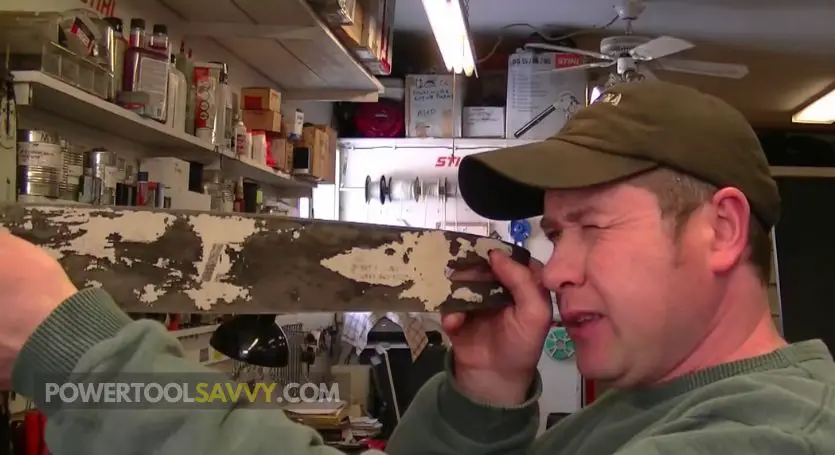
Check for any visible bends or curves in the bar. Keep one eye closed and gently sway your head from side to side to get a better view of the bar!
If you do see any noticeable curves, bend marks, or cracks – it’s a SURE sign that your bar has seen better days and it’s high time to swap it out.
Learn More: 5 Methods to Check If a Chainsaw Bar is Bent
4. The Saw Cuts Crooked
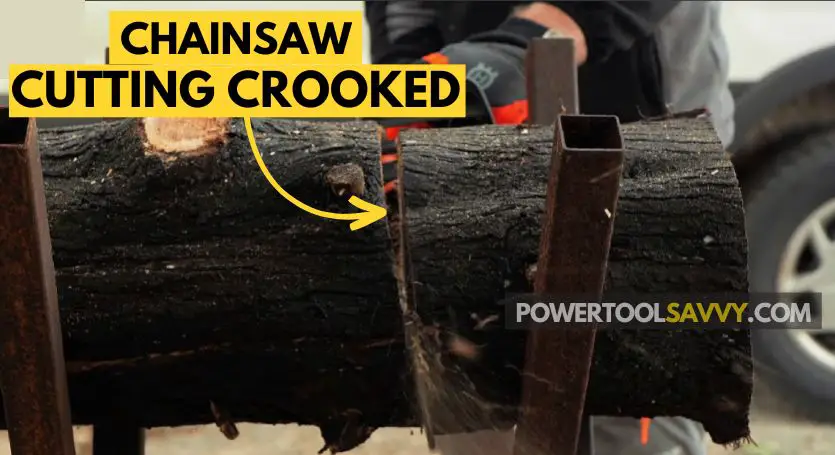
There could be various reasons behind crooked cuts, but a worn bar is definitely one of them!
If your cuts are not straight (even when your chain tension and sharpness are on point), it’s probably because the bar rails have worn unevenly.
Or in simpler words, one of the rails have worn down more than the other.
Take a peek below to see what unevenly worn bar rails look like 👇
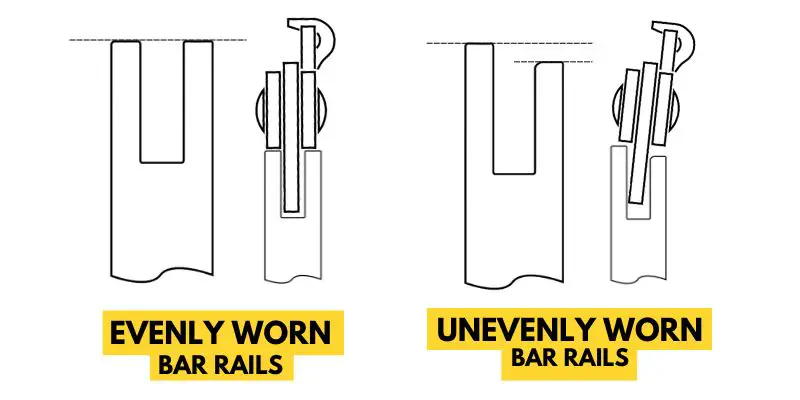
When your bar rails wear unevenly, they can cause the chain to sit at an angle, leaning toward the side with more wear.
As a result, the chain tends to pull the cut in that side, leading to crooked cuts. (and a lot of frustration! 💢)
But the question is –
how would you know if the bar rails are unevenly worn?
Well, there’s a COOL trick to figure it out! 😎
Try standing the bar on its rails. If it doesn’t stand up straight, tilts to one side, or gives you a wobbly performance, that’s a clear sign that your bar rails have worn unevenly.
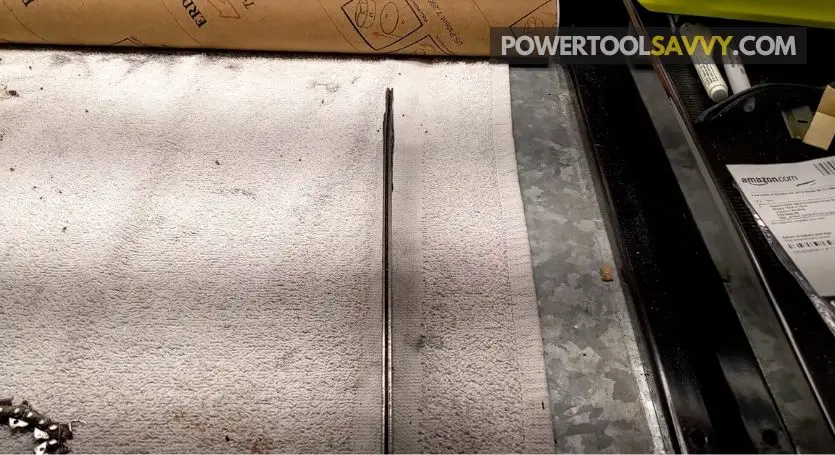
Learn More: Why is My Chainsaw Cutting Crooked?
To be honest:
A slight imbalance might not make a BIG difference (and can often be smoothed out with a bar rail dresser).
But when it’s gone way beyond that and turned into a real headache, well, there’s NO other choice – it’s time to swap out that bar!
5. The Bar Nose Sprocket is Jammed or Broken
One more telltale sign that your bar is worn out and ready for retirement is when the nose sprocket refuses to spin or, even worse, is broken.
It could be due to various reasons, including –
- lack of lubrication,
- running out of bar and chain oil,
- getting the bar pinched,
- overheating, and many more.
So, what’s the FIX for this one?
If you’ve got a replaceable nose bar, simply swap out the sprocket and you’re good go go! (depending on your bar model, this could set you back anywhere from $10 to $30)
If it’s a solid nose bar (meaning the bar is one solid piece), you need to replace the whole bar. (SORRY!)
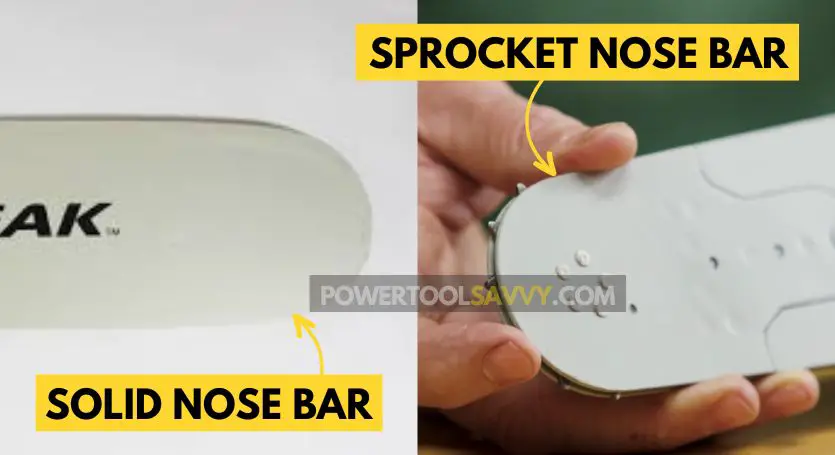
PRO TIP: If you don’t want your bar nose sprocket to get jammed too often, be sure to keep it well lubricated.
You’ll see a small hole in the sprocket – that’s where you need to apply the oil.
Personally, I find using a grease gun makes this job a whole lot easier!
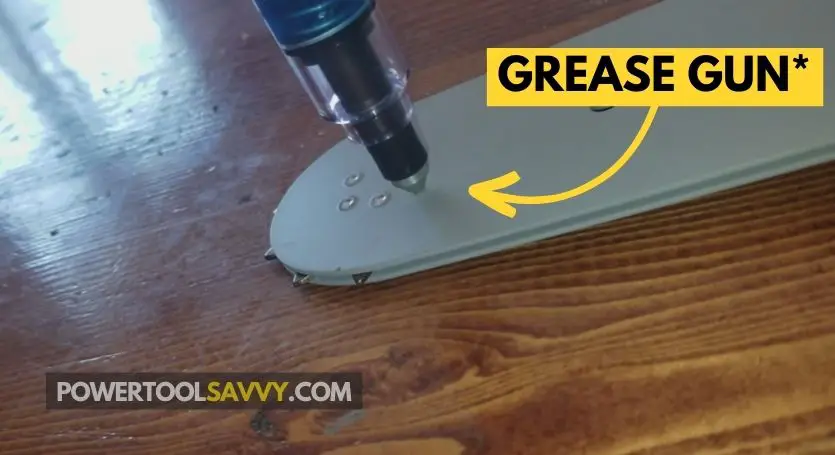
6. The Bar is Cracked or Missing Chunks
Now this one’s a bit SERIOUS!
Closely inspect the bar for any cracks or missing chunks.
If you spot any, it’s a sign to retire that bar, hang it up on your wall for decoration, and go grab yourself a shiny new one!
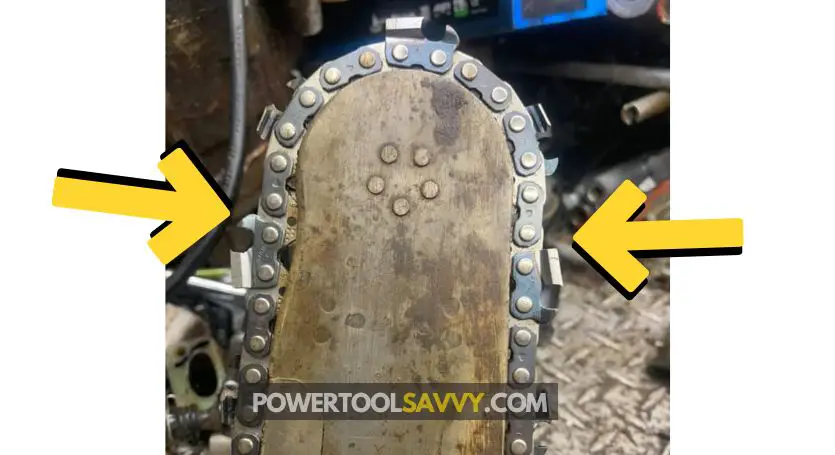
Because, if you keep using a damaged bar like this, you’re flirting with danger, and that’s definitely NOT cool!
You might end up snapping the chain and some injuries to boot.
I can relate—
I’ve had to toss out two bars recently because their rails were all cracked and chipped.
At first, I thought it was the chain causing the ruckus with all that chattering, but a closer look revealed that the real troublemaker was the bar itself!
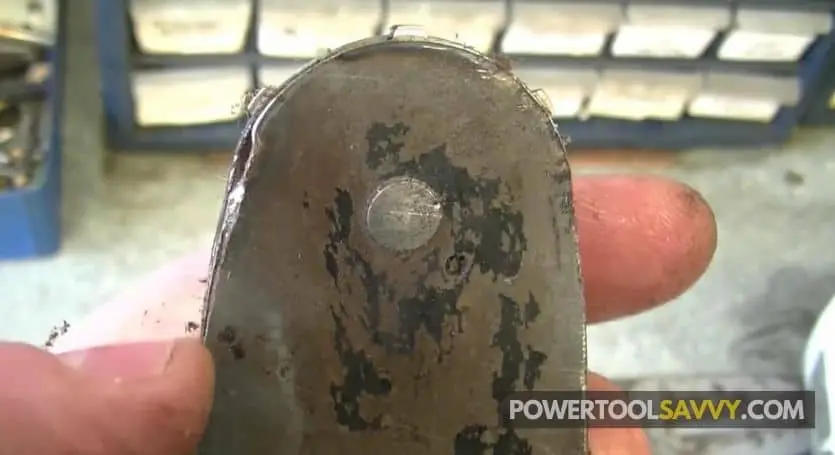
7. The Chain Gets Stuck in the Bar or Doesn't Move At All
If you find your chain constantly stuck in the bar groove or refusing to move, that’s a sign that your bar has worn out.
But why does this happen in the first place?
Well, the cause is usually due to pinched bar rails, or in simpler terms, the bar groove has become too snug for the chain to move around freely.
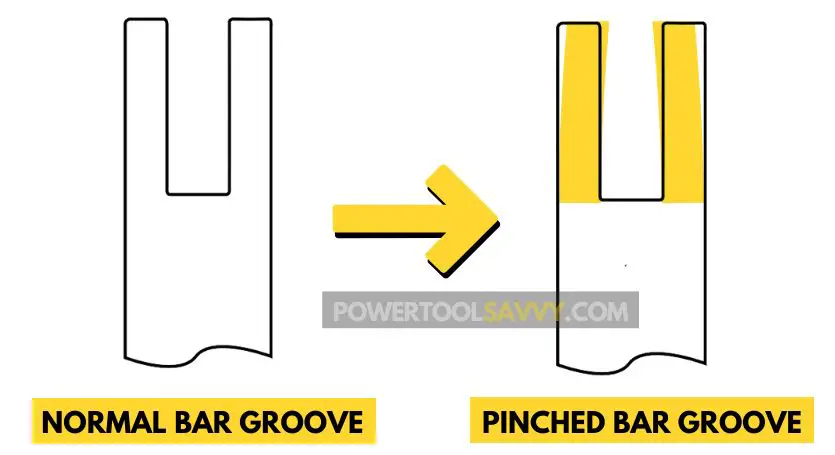
Btw oftentimes, this issue can be easily fixed with a bit of filing. (which can save you a few bucks on buying a new bar!)
I’m lucky to have a small engine shop nearby that’s always a big help with these chainsaw hiccups. They’re real PROS when it comes to handling chainsaws!
(Btw, I’ve written an entire article on this topic. You can check that out here 👉 Why Does My Chain Keep Getting Stuck in the Bar?)
The Average Lifespan of Chainsaw Bars
On average, chainsaw bars last anywhere between 5 to 10 years. And if maintained properly, they can last up to 12 years easily.
But there’s a catch!
Just like any equipment, the lifespan of a chainsaw bar depends on a couple of factors, like – 👇
- the type and quality of the bar,
- how often you use it,
- the type of wood being cut,
- how well you take care of it,
- its repairability,
- and lastly, how you define the term “worn out.”
Therefore, it’s quite tough to give a definite answer to this question.
If you want to learn more, check this article 👉 How Long Do Chainsaw Bars Last?
6 Chainsaw Bar Maintenance Tips
Chainsaw bars are quite expensive! (that’s NO secret)
Here are 6 chainsaw bar maintenance tips to get the most out of it:
- Keep your bar clean. Clean out the groove in your bar using a flat-head screwdriver every few weeks (a tongue depressor or a popsicle stick would do the job too!).
- Make sure your saw is oiling. Keep the oiler holes clean, use quality bar oil, and before each use, ensure there’s enough oil in the reservoir.
- Make sure the chain is properly tensioned. A loose chain could cause damage to the nose sprocket, while an overly tight chain will cause unnecessary wear to the bar rails. (Learn More: How Tight Should a Chainsaw Chain Be?)
- Keep your chain sharp. There’s nothing worse than a dull chain that starts to pull the bar down. Make sure you’re keeping your chain sharp! (and AVOID doing these 10 sharpening mistakes)
- Utilize wedges when necessary. If a cut starts to pinch the bar shut, don’t force it– use wedges or clamps to finish off your cut safely and efficiently. They’re like lifesavers for your bar!
- Flip the bar to balance the wear. Chainsaw bars tend to wear out faster on the bottom side (where most of the cutting takes place). So flip the bar at least once every fresh chain to even out the wear and extend its lifespan.
There you go!
These are the BASICS of chainsaw bar maintenance that every fellow needs to follow.
Happy sawing 🙂

